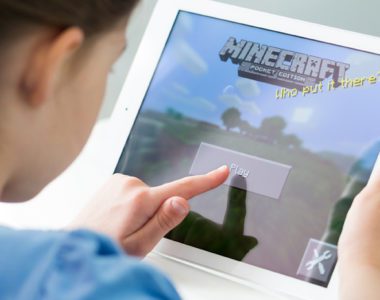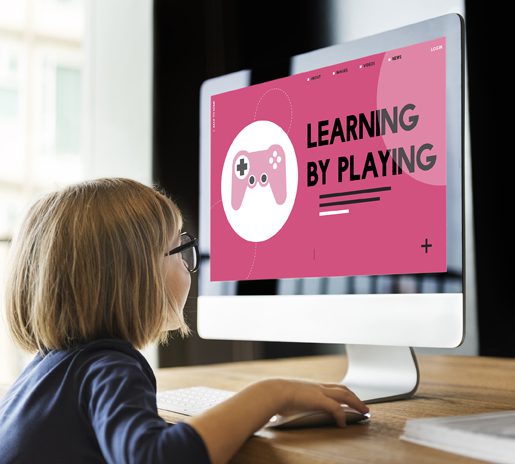Like many of your kids, my children stopped “going to school” in mid-March and effectively began attending all of their classes online for the remainder of the 2019–2020 school year. 

Similarly, parents across the country bemoaned the sudden need to figure out the logistics of simultaneously dealing with their own rapidly changing workplace dynamics and providing 24/7 

their younger siblings or grandkids. Given the simultaneous closing of many businesses due to stay-at-home orders, for many other parents, no school meant having their kids “under foot,” as my grandmother used to say, all day every day while parent and child worked and learned together from home in a collective and noble effort to flatten the dreaded curve.
By the time summer break rolled around, my wife and I, along with millions of other parents, could certainly be forgiven for thinking that would be the end of remote learning. “What’s the likelihood that the pandemic will still be around in the fall?” we asked ourselves. “Zero,” we shot back without hesitation. Surely our kids would be back in school by then, learning in an actual classroom the way they usually did. Whoa, not so fast! Flash forward to mid-summer when many state governors began predicting that some form of blended learning, meaning partly in the classroom and partly virtual, would likely be the order of the day come fall in the absence of a safe and effective vaccine. Country music fans are perhaps familiar with the Toby Keith song that includes the line “I wish I didn’t know now what I didn’t know then.” Agreed!
Regardless of what form it takes when school resumes in just a few short weeks, what can teachers do to capture their students’ attention right away along with making sure they stay engaged for the entire school year, especially if part or all of it includes remote instruction? As an educator myself, I can say without hesitation that I worked alongside some of the most creative people on the planet throughout my career, so I have the utmost confidence that our kids will be in very good hands. With that in mind, I suspect that most teachers will be directing at least part of their energy into incorporating some form of gamification elements into their teaching. So what does that mean, exactly?
What Is Gamification?
For the uninitiated, Wikipedia defines gamification as “The use of game-thinking and game mechanics in a non-game context in order to engage users and solve problems.”1 Simply put, it means making an everyday activity more fun by adding game elements to it. Although there seems to be a difference of opinion regarding when the term was first coined, most agree that the concept really took off around 2010, although not related to education in any way. It first came on the scene as a way to motivate adults to engage more with businesses, websites, online communities, etc. The two main components of gamification are “game mechanics” (points, levels, badges, etc.) and “game dynamics” (competition, collaboration, etc.).2 Both of these elements work together to create a gamified experience in an otherwise nongaming situation.
What Does It Look Like?
Most, if not all, of us have experienced gamification firsthand to some extent. Does your credit card offer rewards 

McDonald’s Monopoly game is a great example of this. Even as adults, we absolutely love the idea of having the chance to win prizes for doing things we’re going to do anyway, such as grabbing a meal from our favorite fast-food place. 

Gamification in Education
By now, you’re probably thinking of some great examples of how the concept of gamification has been applied to education even as you read this blog post. Does anyone remember playing the educational video game The Oregon Trail? Originally created by a trio of student teachers way back in the “dark ages” of gaming—the 1970s, this innovative game was one of the first to use technology to teach kids about a period in U.S. history they definitely couldn’t relate to and surely would never be able to fully comprehend just by reading about it in a history textbook. The great news is that not only is it still around but today’s students (and nostalgic adults) can play it for free online!


In addition to the ones mentioned above, there are so many more incredible examples of how gamification can be used in teaching, with new ones coming along all the time thanks to the aforementioned creativity of teachers everywhere. This is particularly good news as we look ahead to the upcoming school year and consider whether students will be back in the classroom for all, part, or even any of their school days. More than likely, some portion of their education will continue to happen online, which makes gamification an extremely valuable tool for schools that want to keep students engaged whenever they aren’t able to be in a physical classroom. For evidence of this, we need only look at the numbers. As of 2013, there were 183 million active gamers in the U.S. alone, which is well over half the population, and a whopping 97% of young people reported playing computer and video games.3 Those numbers speak volumes as we consider the potential effectiveness of gamifying remote instruction to some extent. Let’s look at a few ways gamification can be applied to remote instruction.
Basic Gamification Techniques
Looking back to the basic examples of gamification that were presented earlier in this blog post such as earning points or cash back on credit card purchases and cashing in stars for delicious caffeinated beverages, the same approach can be applied to education in pretty much any learning environment, including remote instruction. For example, teachers who just want to dip their toe into the gamification kiddie pool could start out by implementing a point system—separate from traditional grades, of course—in which students earn points for things like attending video conference calls, perhaps with bonus points tacked on for turning on their webcam and/or actively participating, or for completing assignments before the due date. At the end of each week, points are added up and a prize is awarded to the highest point earner(s).
A slightly different approach might involve having points accumulate throughout each marking period or semester and then awarding virtual medals (think Olympic-style gold/silver/bronze) to the first-, second-, and third-place finishers. Alternately, teachers might consider going the Harry Potter route and dividing students into groups, or “houses,” and assigning an appropriate number of house points to the group as opposed to individual students when any member of a house completes a predetermined task. As with the individual approach, prizes may periodically be awarded to the house with the most points. Yet another option involves teachers awarding badges for specific achievements throughout the week, marking period, or semester, such as “Most Thoughtful Question,” “Best Zoom Background,” etc.
More Advanced Gamification Applications
Beyond those basic ideas, gamification can also take the form of actual educational activities and even software or subscription databases. There are probably an infinite number of examples, but for starters, teachers could opt to replace a traditional homework assignment with something much more fun like a scavenger hunt in which students 

Although no longer new or innovative, word search puzzles and crossword puzzles are a classic but creative example of gamifying the educational experience. While such activities have been available in print form forever, teachers can now find interactive versions available online and even create their own by inputting a predetermined list of terms and clues. An older, more basic version and one I’ve personally used in the past is still available at https://www.puzzle-maker.com/. For readily available word search and crossword puzzles, Infobase offers a number of databases for various age groups that include both types of puzzles, including The World Almanac® for Kids Elementary (gr. K–3), The World Almanac® for Kids (gr. 4–8), Today’s Science (gr. 6–12), and Issues & Controversies (gr. 9–12). You can check out all of these, and sign up for a free trial.
Conclusion
Needless to say, almost any lesson or activity can be gamified. There are an infinite number of ways gamification can be applied to both traditional and nontraditional instruction—the former meaning any teaching that takes place in a physical classroom and the latter referring to virtual or remote instruction—certainly well beyond the examples I’ve provided. From basic approaches like point systems and badges to slightly more involved hands-on applications such as paper-and-pencil activities to the use of technology in the form of digital resources such as computer software, online databases, and websites, the sky is most assuredly the limit. Furthermore, and lest the point has been lost on anyone, I credit the creativity of my fellow teachers as the source of so many great examples of gamification, including the ones I’ve personally seen and used over the years.
It’s also worth mentioning that not only can gamification apply to regular education, but such techniques also work incredibly well in special education classrooms and as a component of intervention programs. In fact, there are entire schools of thought regarding RTI (Response to Intervention) and its close cousin, PBIS (Positive Behavioral Interventions and Supports) that revolve around using a gamified approach. Since neither of these are areas of expertise for me, I’ve opted to simply mention them here, and I would encourage readers to seek out information about these topics from the experts. With regard to regular education in general, however, and remote learning in particular, gamification goes a long way toward keeping kids engaged in what can accurately be described as a less-than-ideal way for students to learn.
See also:
- Trending Professional Development Topics in Our New Reality
- Virtual Summer Learning: Build Curiosity into Everyday Activities: Webinar
- How Far We’ve Come: Reshaping Education Post-COVID-19
- Free, Appropriate, and Least Restrictive: The Challenges of Meeting IEP Goals and Delivering Special Education Instruction Remotely During a Pandemic
References:
1. https://en.wikipedia.org/wiki/Gamification
2. https://www.bunchball.com/gamification
3. https://blog.ryan-jenkins.com/2013/03/04/12-startling-gamification-stats

